Perils At Sea
A newspaper correspondent interested in the shipbuilding industry in Maine visited the Kennebunks on April 25, 1876. Standing on the bridge between Kennebunkport and Lower Village that day he could see 9 vessels in various stages of completion in the shipyards on both sides of the river. The reporter was clearly knowledgeable about the industry as he recorded minute details of each vessel’s construction. I have included his fascinating report among the accompanying photographs. In the Kennebunkport yard of Crawford & Perkins, the 208-foot ship Rembrandt, featured in our story today, was on the stocks.
The master of the Rembrandt was to be Captain Horatio Moody of Kennebunk. Captain Moody was a third generation Kennebunkporter. His grandfather, Rev. Silas Moody began preaching at the First Church of Arundel in 1771. Horatio’s father, also named Silas, died when his sons, William and Horatio were still minors but both boys grew into productive men, William F. Moody on land and his brother Captain Horatio Moody at sea.
When not at sea, Horatio lived in Kennebunkport with his brother’s family until he had a family of his own. He married Mary G. Wise in 1862 and they had their first child a couple of years later. Their infant son went to sea with his parents aboard the new ship Laurens across the Atlantic to Bristol England in June 1864 when George was just 6 months old. Horatio and Mary built an elegant home on Summer St in 1866 in anticipation of the birth of their second son Harry.
By the time the Rembrandt was launched on July 22, 1876, Captain Moody’s wife and two sons had accompanied him on many sea voyages. The whole family was aboard the Rembrandt when she was towed to New York City where her rigging was finished. On July 25, 1876, they set sail from New York on the six-month voyage around Cape Horn for San Francisco. A $130,000 cargo of flour and wheat for Liverpool, England was loaded on the Rembrandt and on March 21, 1877, she set sail to go around Cape Horn again in the opposite direction: A perilous journey under the best of circumstances.
On May 10, 1877, when the Rembrandt was near The Horn in a frightful gale, the Captain’s wife, her two sons, and the stewardess watched from the pilot house as an enormous wave crashed over the ship. It broke through the doors of the pilot house and washed out its occupants. Mrs. Moody was forced down the cabin stairs into the Mate’s cabin, stunned and bruised and with a broken collarbone. The Stewardess was forced through the lee door, washed around the cabin into the port shrouds where she got tangled up. Her ribs were broken but her life was saved. George and Harry Moody 13 and 11, respectively, were tragically washed over the rail and into the angry sea in an instant. They were never seen again. The storm continued into the following day so powerfully that no lifeboat could be launched to try to find the boys.
The women’s broken bones were set the following day and the journey to England continued but that would be Captain Moody’s final sea voyage. He and his wife, Mary returned to their lonely Summer Street mansion in Kennebunk to live out their days ashore.
The Rembrandt sailed on with a new captain around the horn again later that year where Captain Paine and his crew survived a storm that lasted 20 days. They sailed to Cardiff, Manilla, Calcutta, Sidney, Valparaiso, and Havre. In 1889 the ship Rembrandt and her crew survived a cyclone and an earthquake on the way to Hong Kong. She was finally sold as a barge in 1893, outliving Captain Moody by six years.
The Moodys are buried at Hope Cemetery in Kennebunk. Their children were never found but twin broken-off stone pillars in their honor are a poignant reminder of their lives cut tragically short.


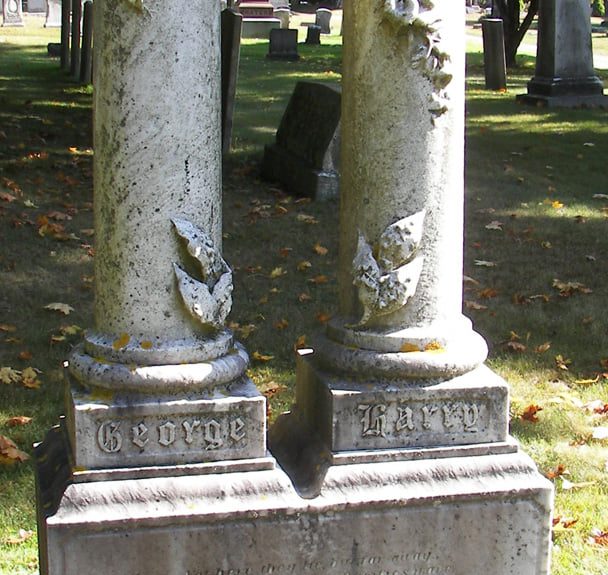
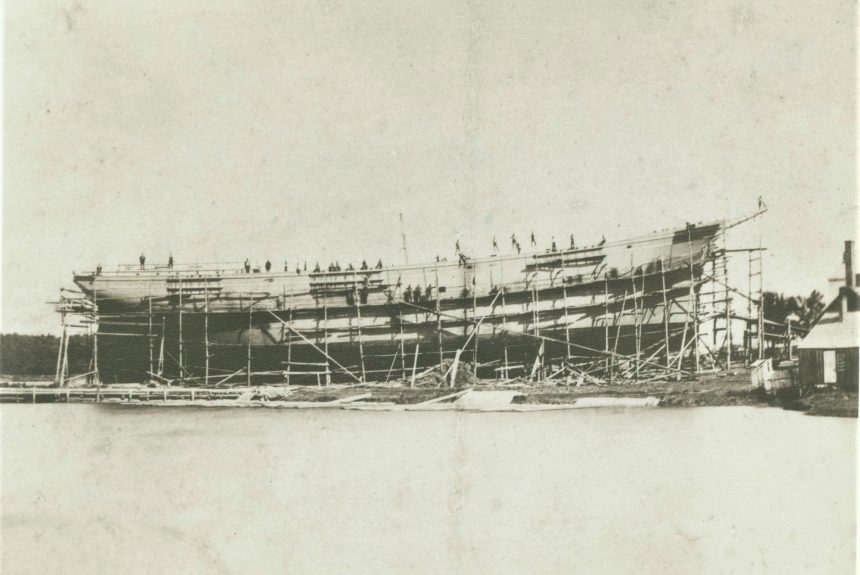
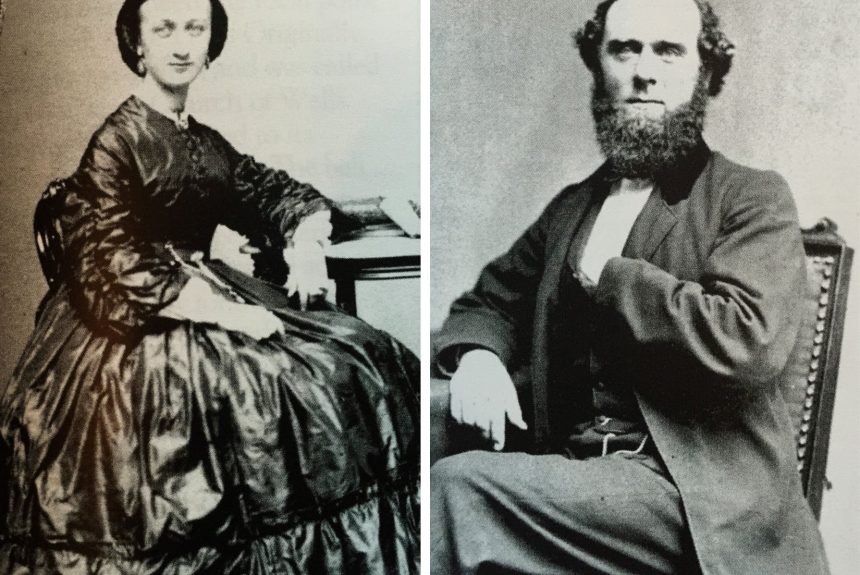
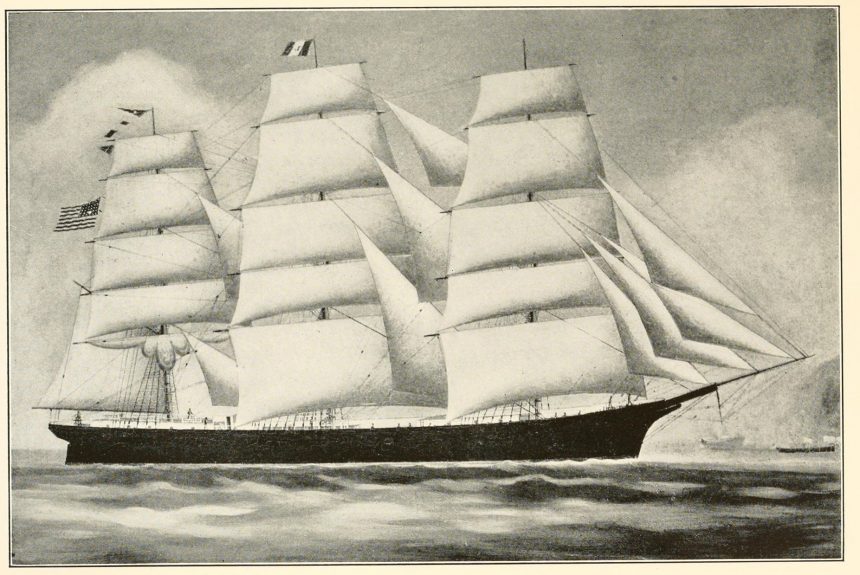
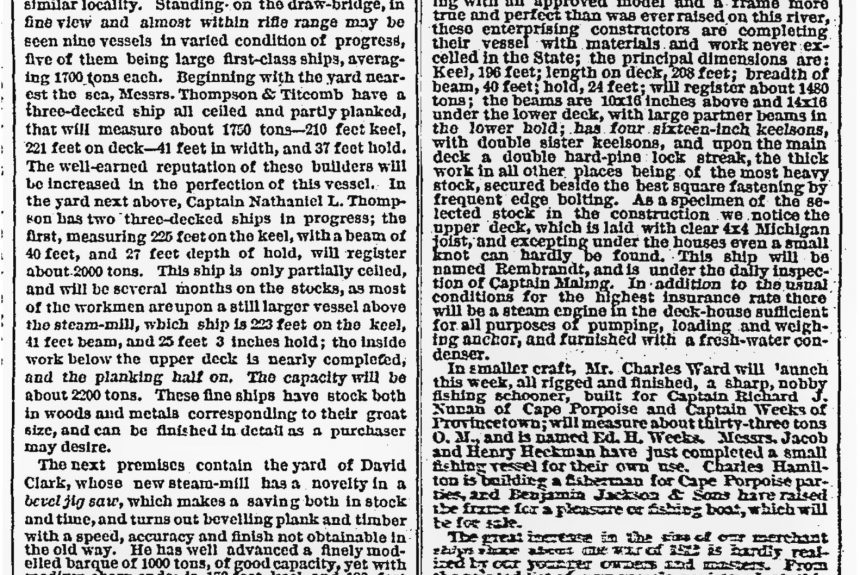
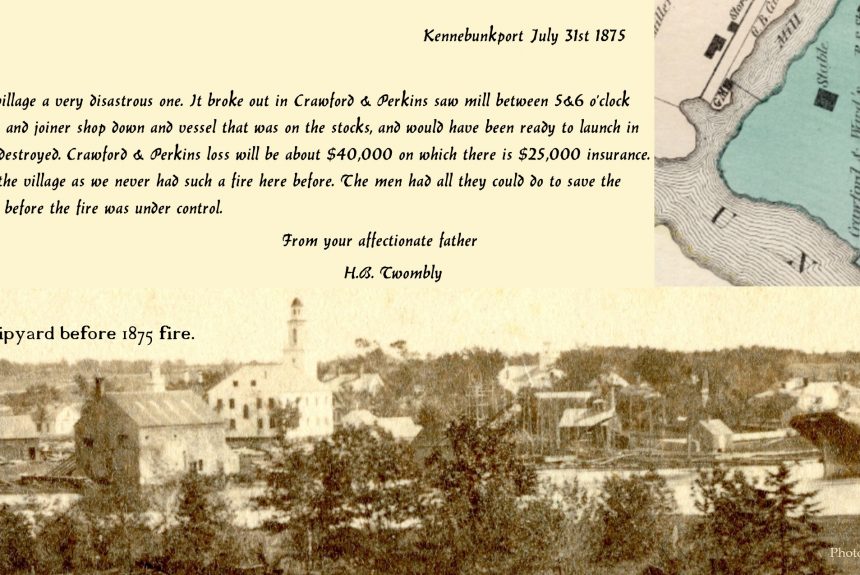
Leave a Reply